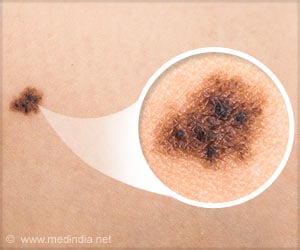A micro-organism found in oceans may hold key for the cheaper and greener manufacture of products ranging from iridescent cosmetics, paints and fabrics
A micro-organism found in oceans may hold key for the cheaper and greener manufacture of products ranging from iridescent cosmetics, paints and fabrics to credit card holograms.
Scientists at the Natural History Museum and the University of Oxford, have found that Diatom, a single-cell organism that evolved over millions of years ago, has a hard silica shell, which displays vivid colours that change depending on the angle at which it is seen from.This effect is caused by a complex network of tiny holes in the shell, which interfere with light waves.
UK scientists have now found an extremely effective way of growing diatoms in controlled laboratory conditions, with potential for scale-up to industrial level. This would enable diatom shells to be mass-produced, harvested and mixed into paints, cosmetics and clothing to create stunning colour-changing effects, or embedded into polymers to produce difficult-to-forge holograms.
Manufacturing consumer products with these properties currently requires energy-intensive, high-temperature, high-pressure industrial processes that create tiny artificial reflectors. But farming diatom shells, which essentially harnesses a natural growth process, could provide an alternative that takes place at normal room temperature and pressure, dramatically reducing energy needs and so cutting carbon dioxide emissions. The process is also extremely rapid – in the right conditions, one diatom can give rise to 100 million descendants in a month.
“It’s a very efficient and cost-effective process, with a low carbon footprint,” said Professor Andrew Parker, who led the research. “Its simplicity and its economic and environmental benefits could in future encourage industry to develop a much wider range of exciting products that change colour as they or the observer move position. What’s more, the shells themselves are completely biodegradable, aiding eventual disposal and further reducing the environmental impact of the process life cycle.”
The new technique basically lets nature do the hard work. It involves taking a diatom or other living cells such as those that make iridescent butterfly scales, and immersing them in a culture medium – a solution containing nutrients, hormones, minerals etc that encourage cell subdivision and growth. By changing the precise make-up of the culture medium, the exact iridescent properties of the diatoms or butterfly scales (and therefore the final optical effects that they create) can be adjusted.
“It’s a mystery why diatoms have iridescent qualities. It may have something to do with maximising sunlight capture to aid photosynthesis in some species; on the other hand, it could be linked with the need to ensure that sunlight capture is not excessive in others. Whatever the case, exploiting their tiny shells’ remarkable properties could make a big impact across industry. They could even have the potential to be incorporated into paint to provide a water-repellent surface, making it self-cleaning,” says Professor Parker said.
LIN/C
 MEDINDIA
MEDINDIA
 Email
Email




